Ever since I read the memoir Running with Sherman: The Donkey with the Heart of a Hero, I've been interested in witnessing burro racing. That's when runners take to the trail with a donkey for a man-versus-man/animal-versus-animal competition—one that's popular in Arizona, Colorado, and now California.
I had my chance this weekend thanks to the non-profit California Breakfast Burritos, which has been focused on bringing pack burro races back to the Golden State since its founding in 2018.

There's a long tradition of burro racing among 19th-century miners—locally, in Randsburg, Death Valley, and the Eastern Sierra communities. But this version has been around since 1949, when it was used as a marketing gimmick to bring tourism to declining mining communities (and to find a use for those working burros the miners left behind).

The concept is pretty simple: team up with a pack burro (ideally carrying a pack) and race on foot. The challenge is that burros do what they want—and although they're hard workers, and they like having a job, you've got to kind of convince them that the job was their idea in the first place.
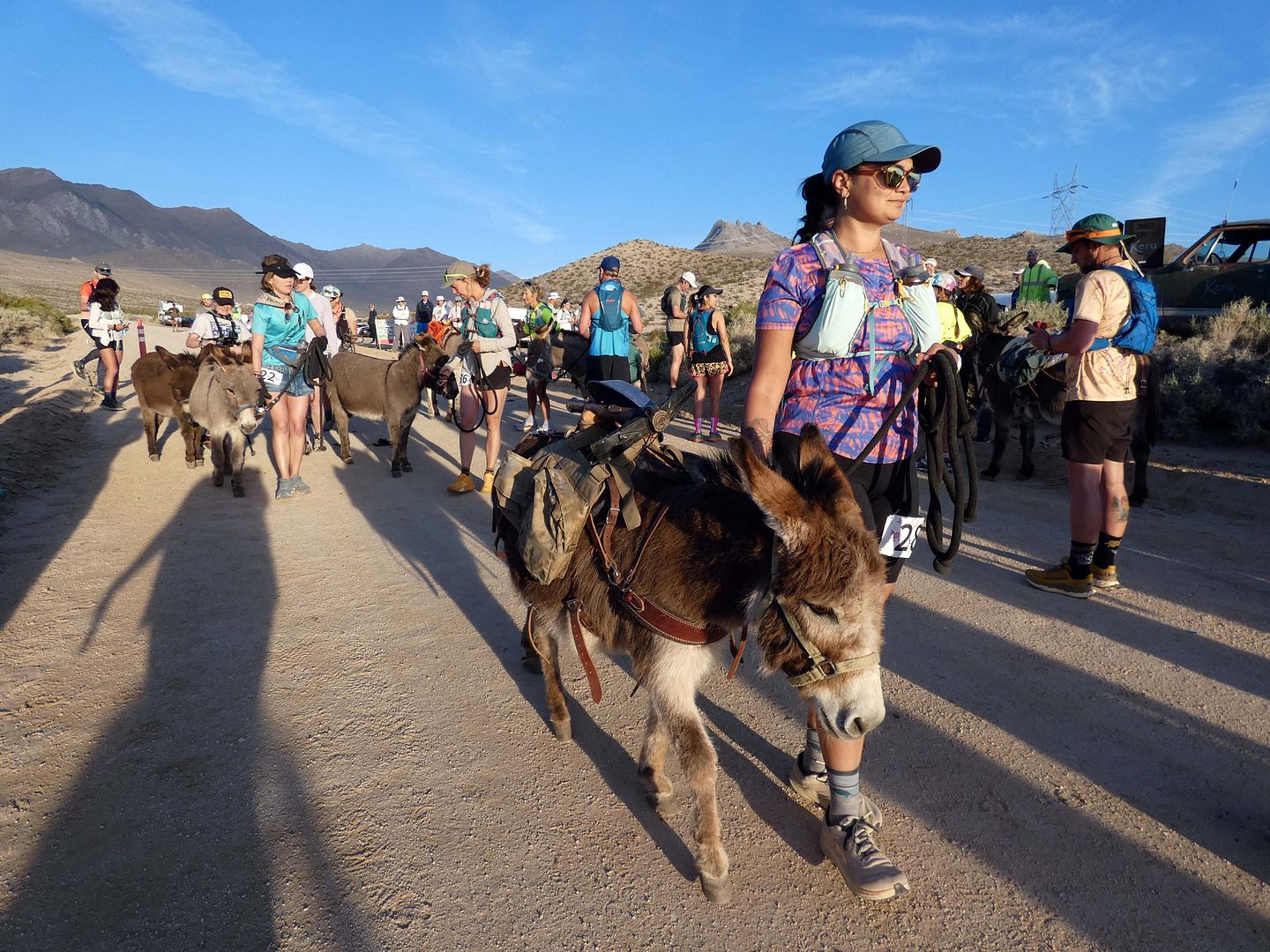
Not everybody has a burro these days—and long gone are the days when you'd just go out and catch your own wild donkey and strap a harness and lead on it—so some people run or walk without an animal. Other runners borrow or rent one, ideally early enough so they can train together and get to know each other.

This year's "Run With the Burros" race started off with a bang—literally, a starter pistol whose firing was enough to get the pack moving pretty quickly down the trail. Although there were some long-distance marathoners for the 26.2-mile long course, and some for the shorter but still grueling 17.5-mile course, the majority were participating in the 10-miler.
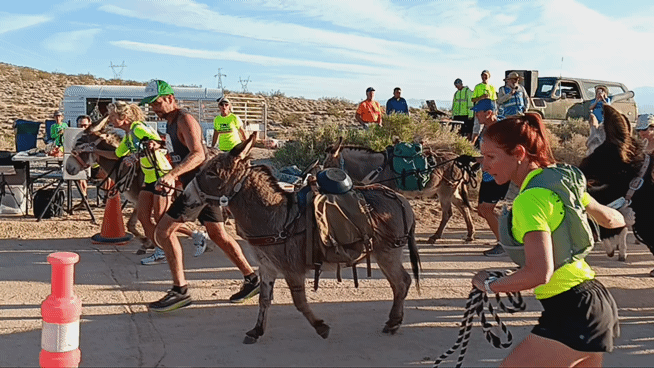
I actually signed up for the 5-mile easy course, which I'd planned to walk solo. But nobody with a burro signed up for that one—and it started an hour later. I figured if it took me two or three hours to hike the five miles, I would miss the majority of animals crossing the finish line (which would be at least an hour and a half after their start time). And I was there for the burros, not the run.
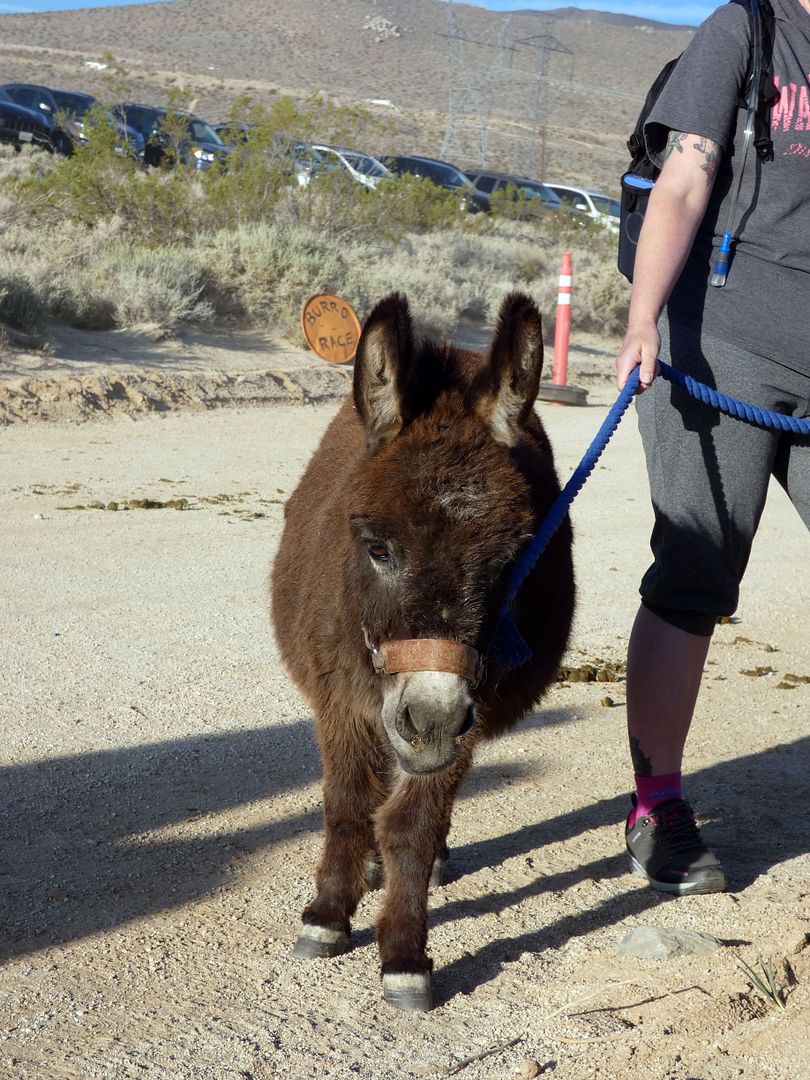
So, I stayed behind and got reacquainted with a micro-mini donkey named Siggy, who I'd met before at the meet-and-greet during the packet pickup times. He was a loaner for the race—and, aged at about late teens or early 20s, still had plenty of energy to hit the trail.
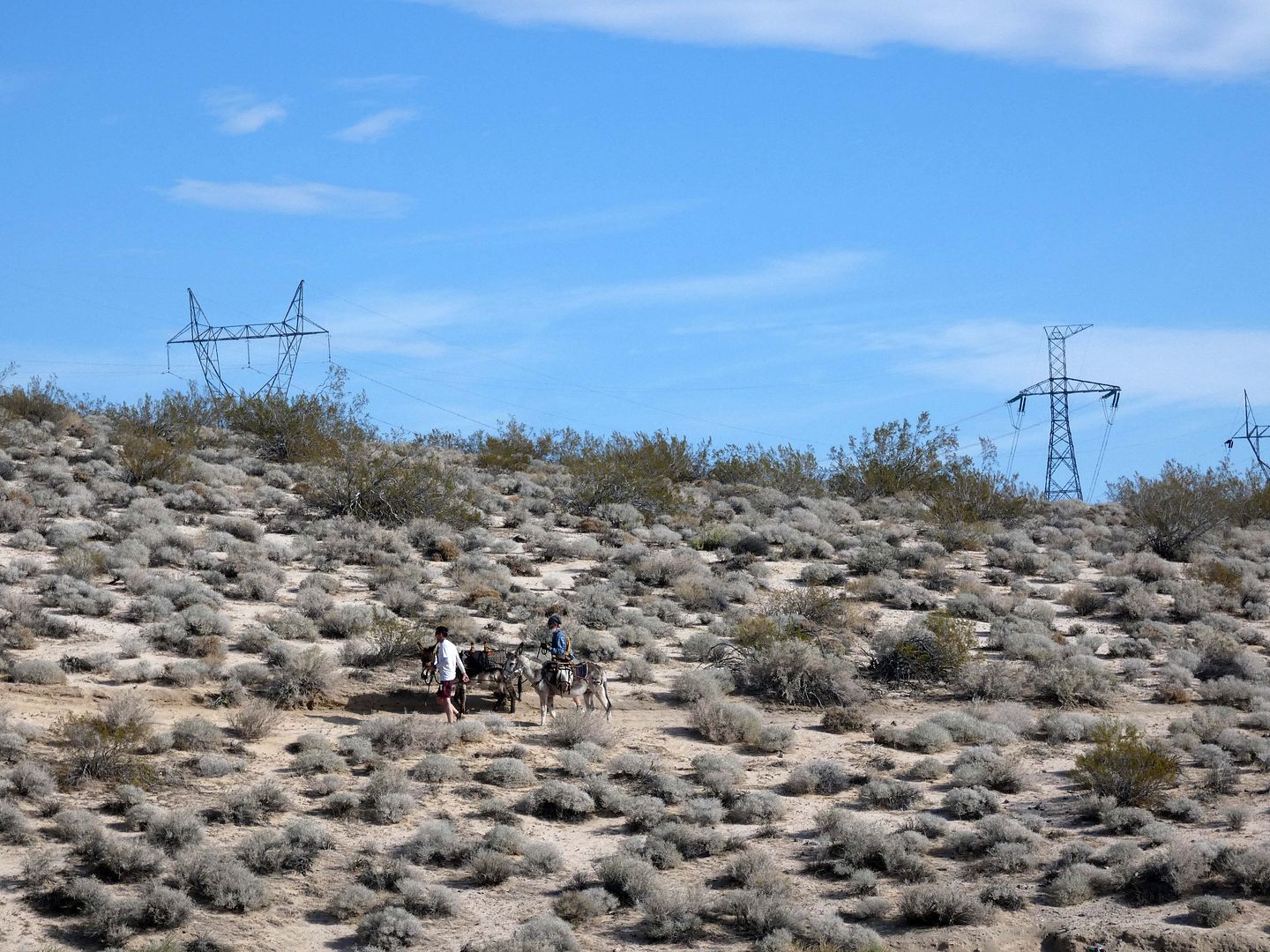
The 10-milers began running at 7:05 a.m.—and at about 8:45 a.m. they appeared on the ridge headed back to the finish line.
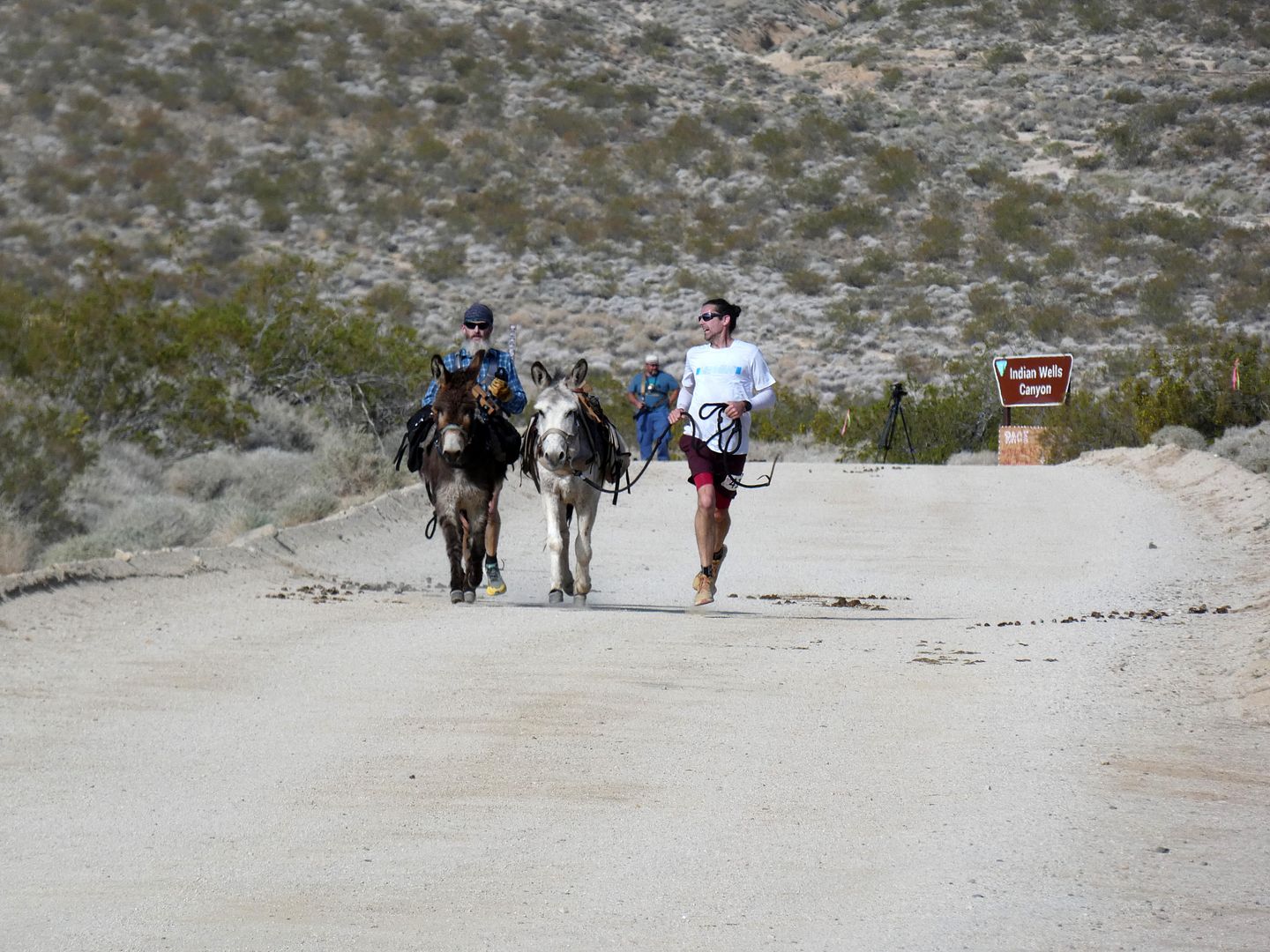
"Ladies and gentlemen, we have a donkey on the road," said the announcer, who instructed us to push off to the sides and give them plenty of room. After all, you don't really know where or when they might veer off.
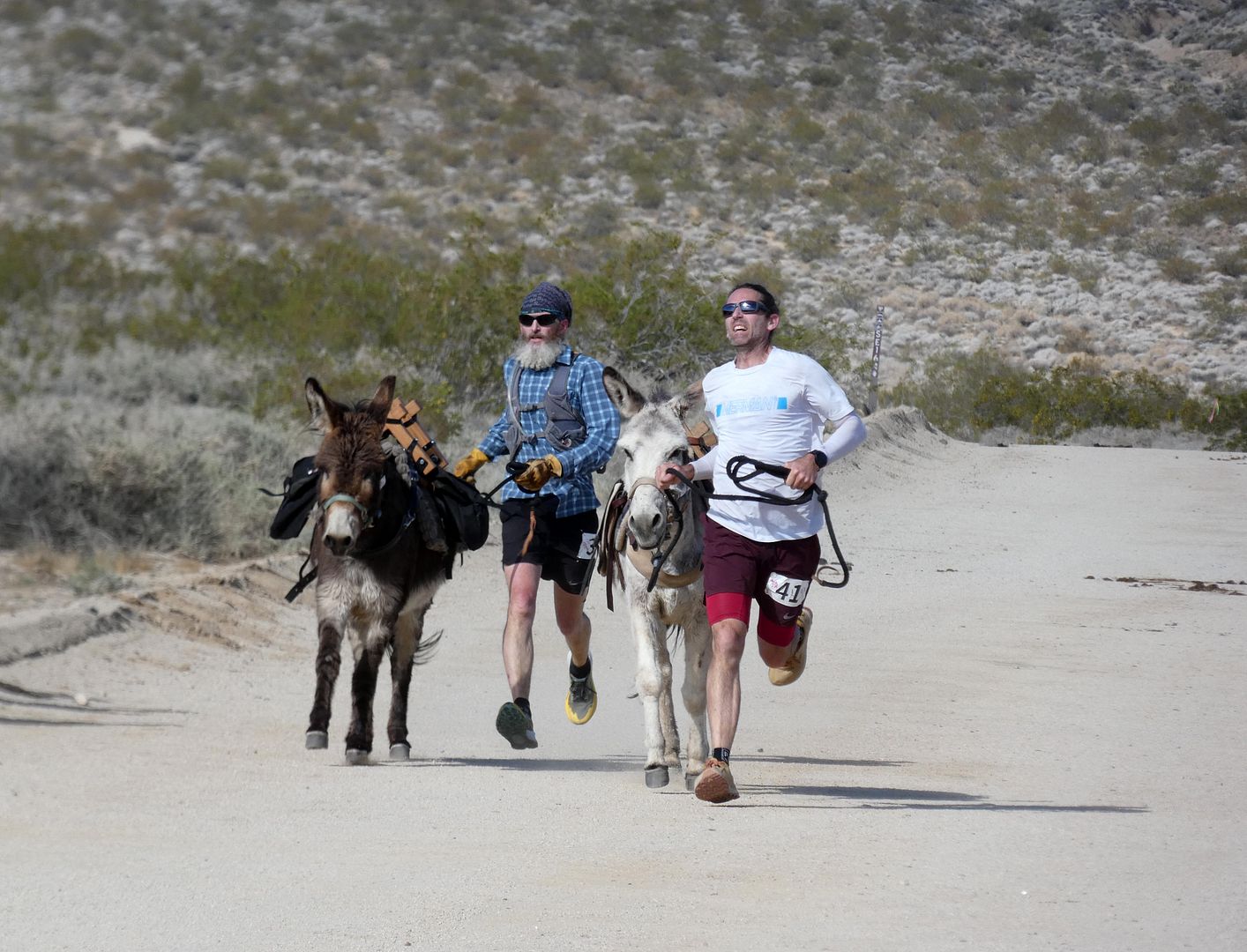
But these two were hauling ass—literally—and had their eyes on the prize.
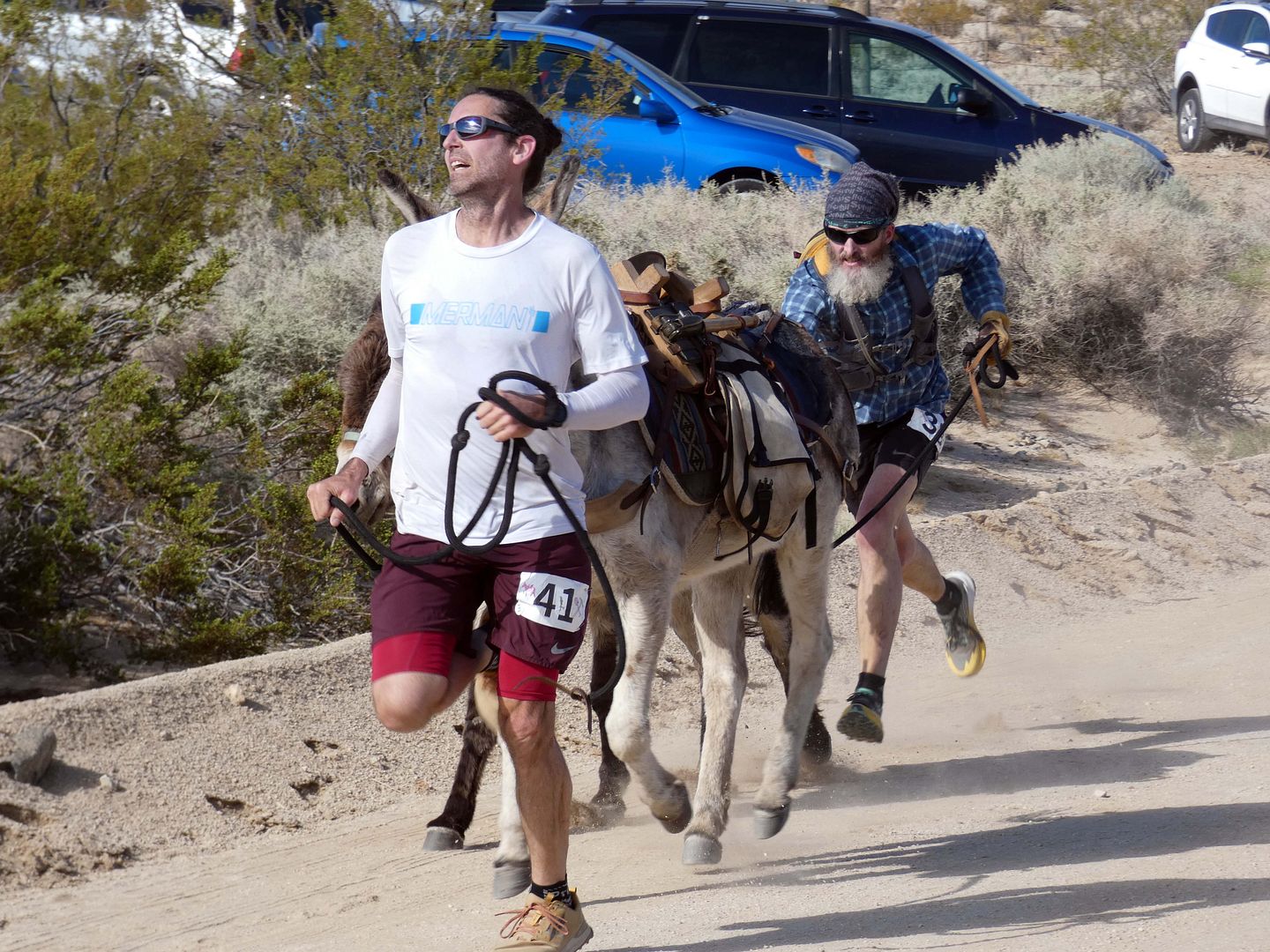
Like any runners, they just needed a little extra oomph to get through that last stretch. Even world champion pack burro runner Bob Sweeney (right) of Colorado.
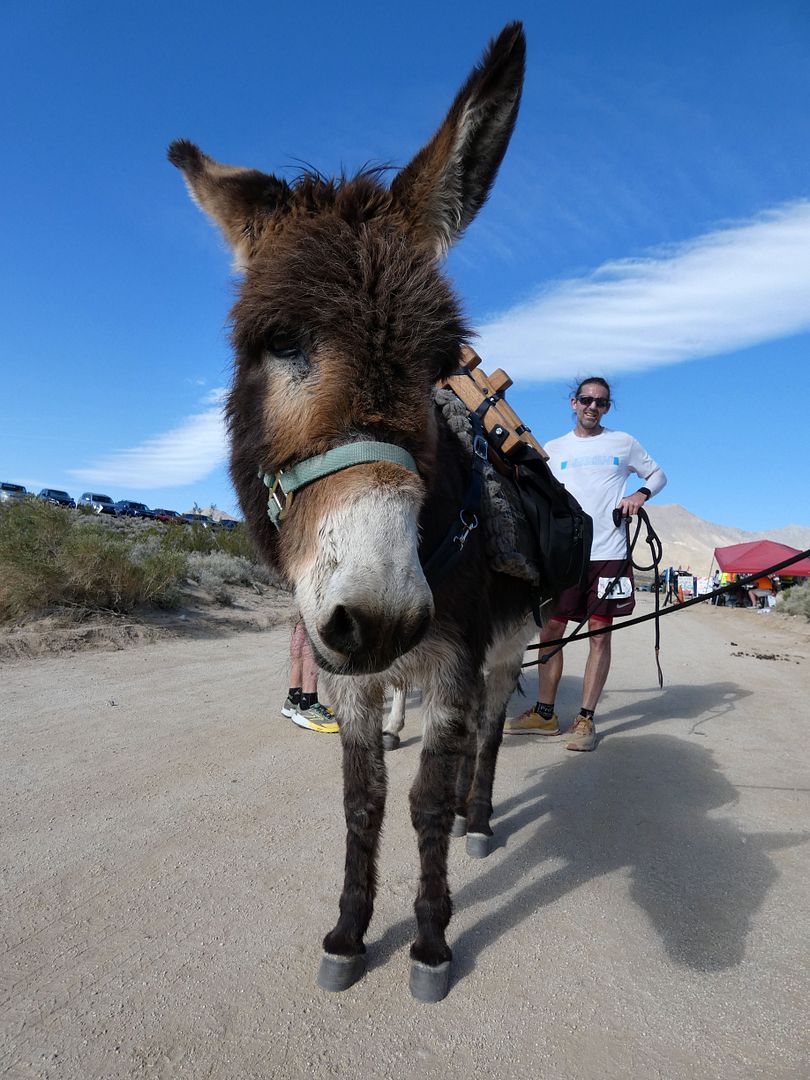
Sweeney won the 10-mile race with a burro named "Sugar Ray" (above)—and not his usual champion partner, Yukon.
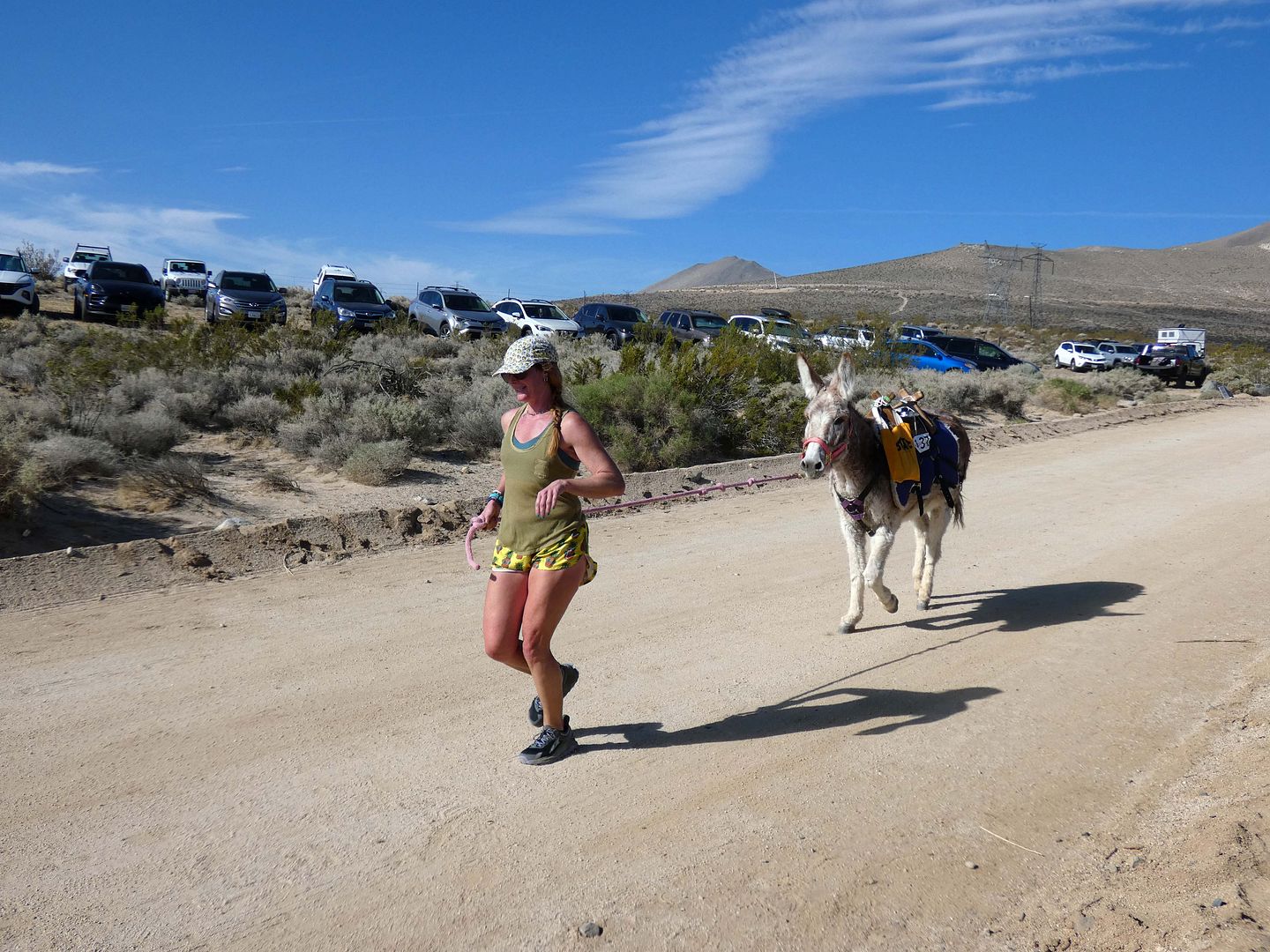
Then there was first female to cross the finish line—although I'm unsure whether that means woman or jenny.
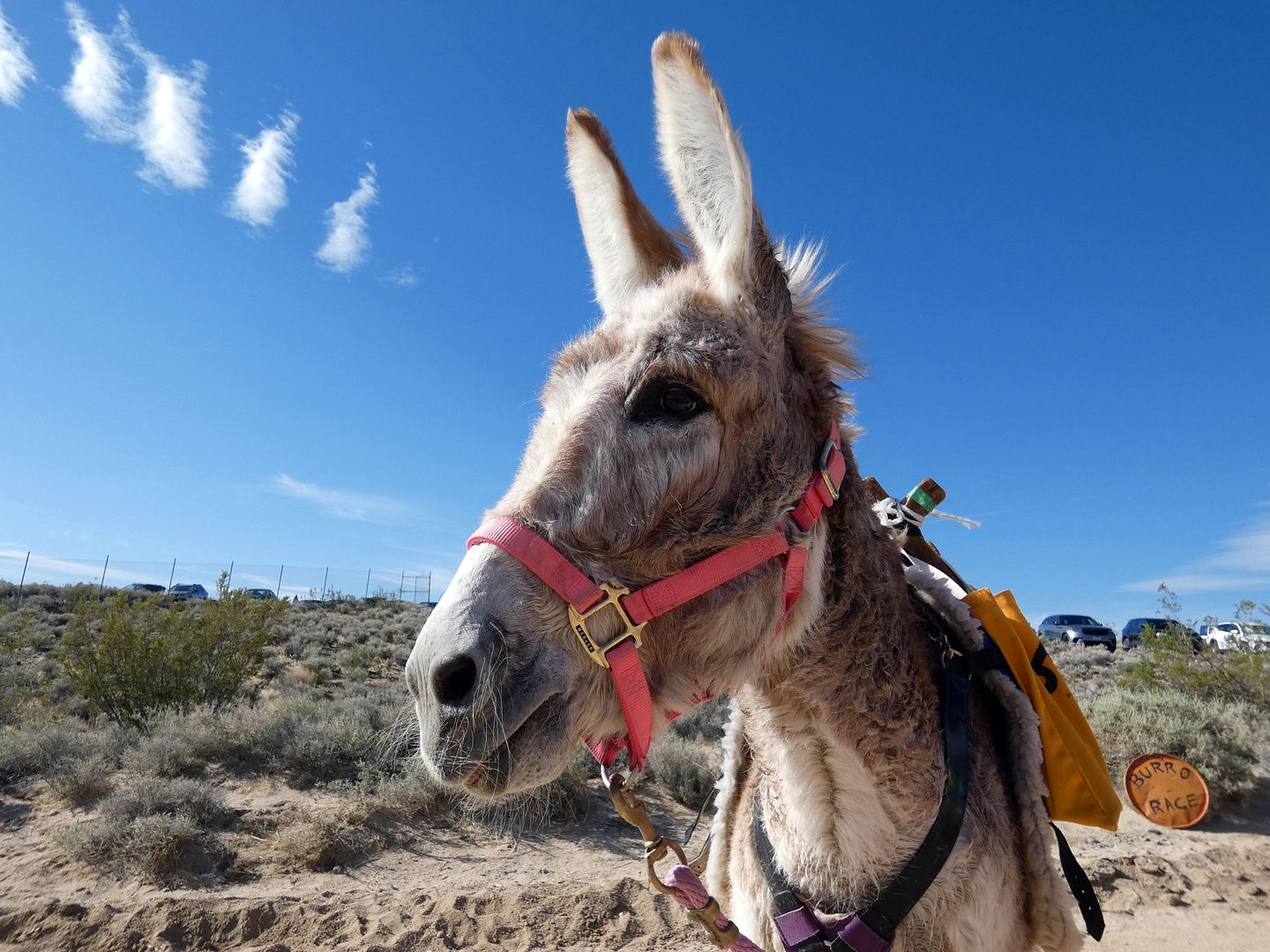
This burro looks so innocent—but from what I overheard, her(?) partner had some trouble with her along the way.
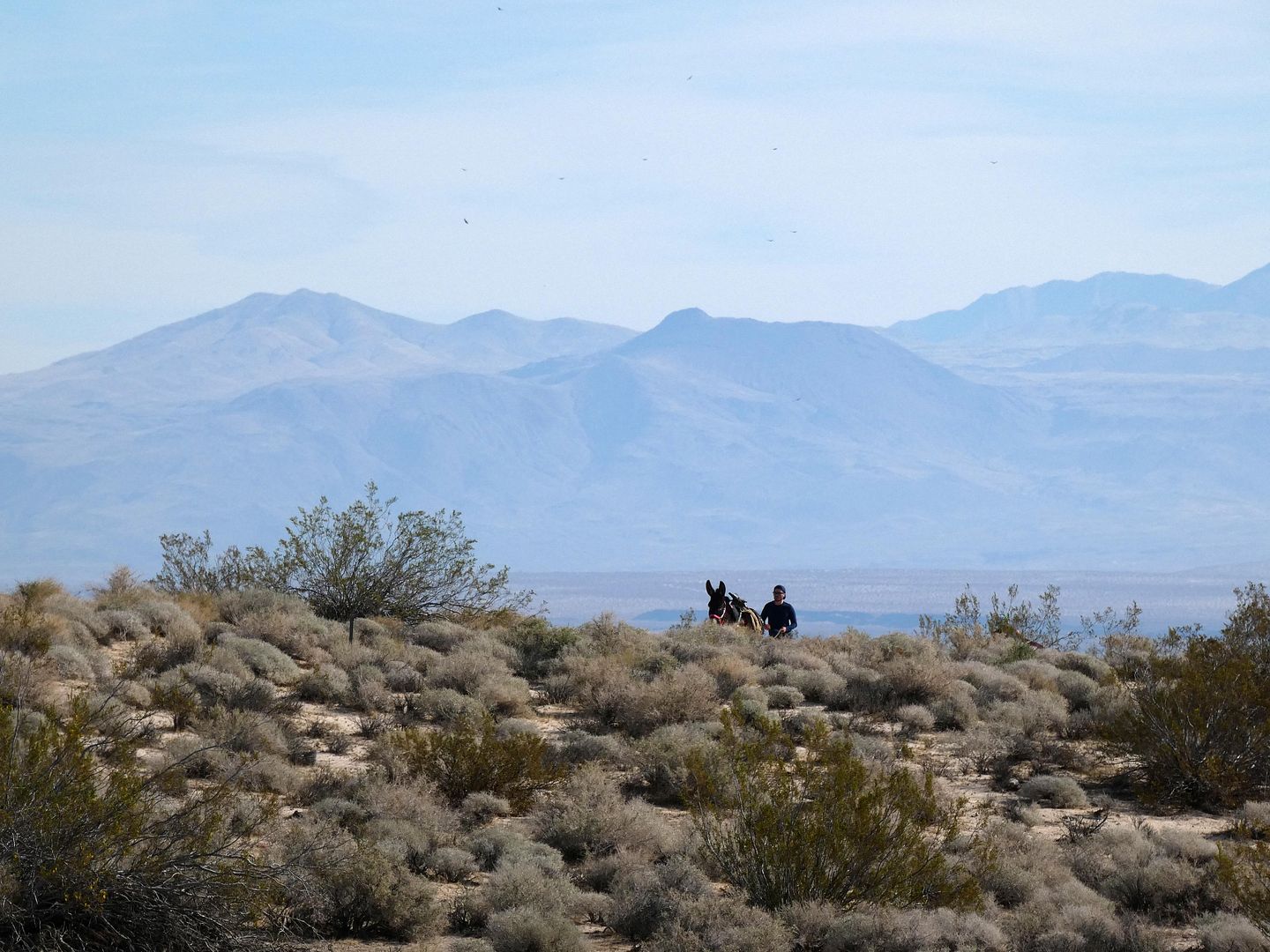 Above: Benjamin Wann
Above: Benjamin WannIt was so exciting to spot the first glimpse of a burro's ears—and then the team cresting over the hill, with the misty watercolor of China Lake fading like a memory behind them.
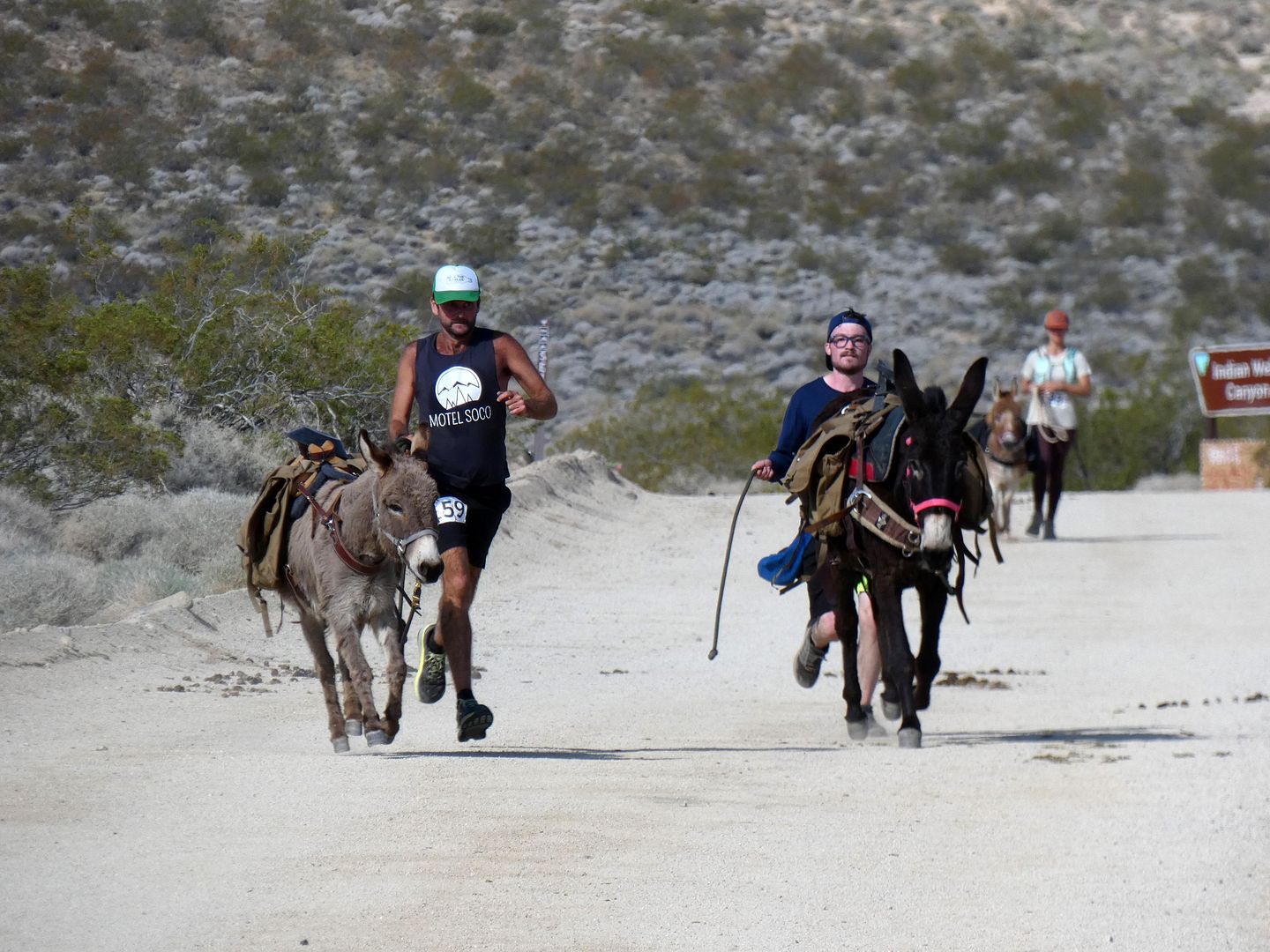
Above: Patrick Sweeney (left) and Benjamin Wann (right)
I'd watch them make their way across the ridge, and then loop back around through Indian Wells Canyon the way that they came—having made their way through Owens Peak Wilderness backcountry, in the shadow of Owens Peak.
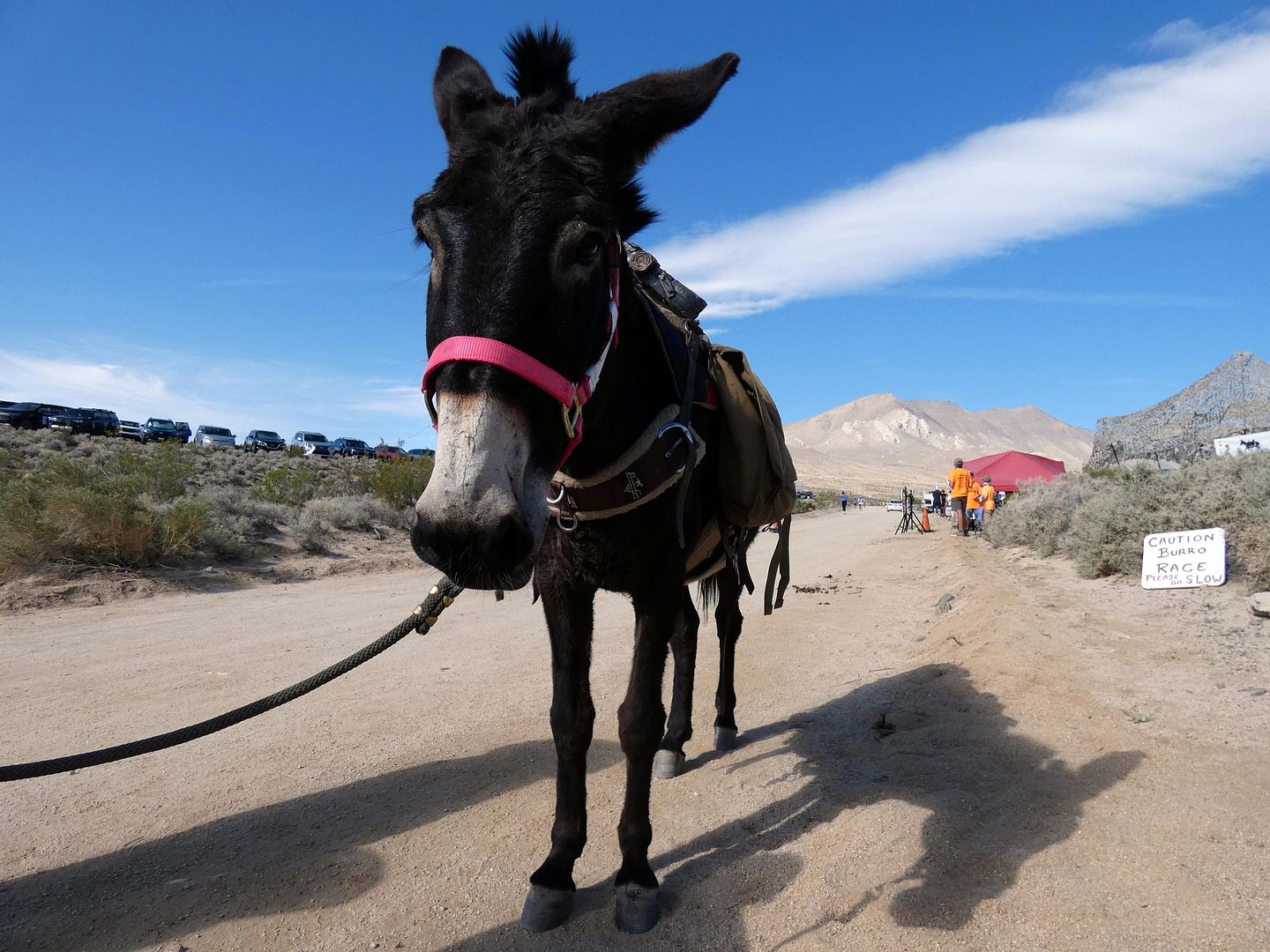
And then I'd make a beeline past the finish line to tell the burros what a good job they did.
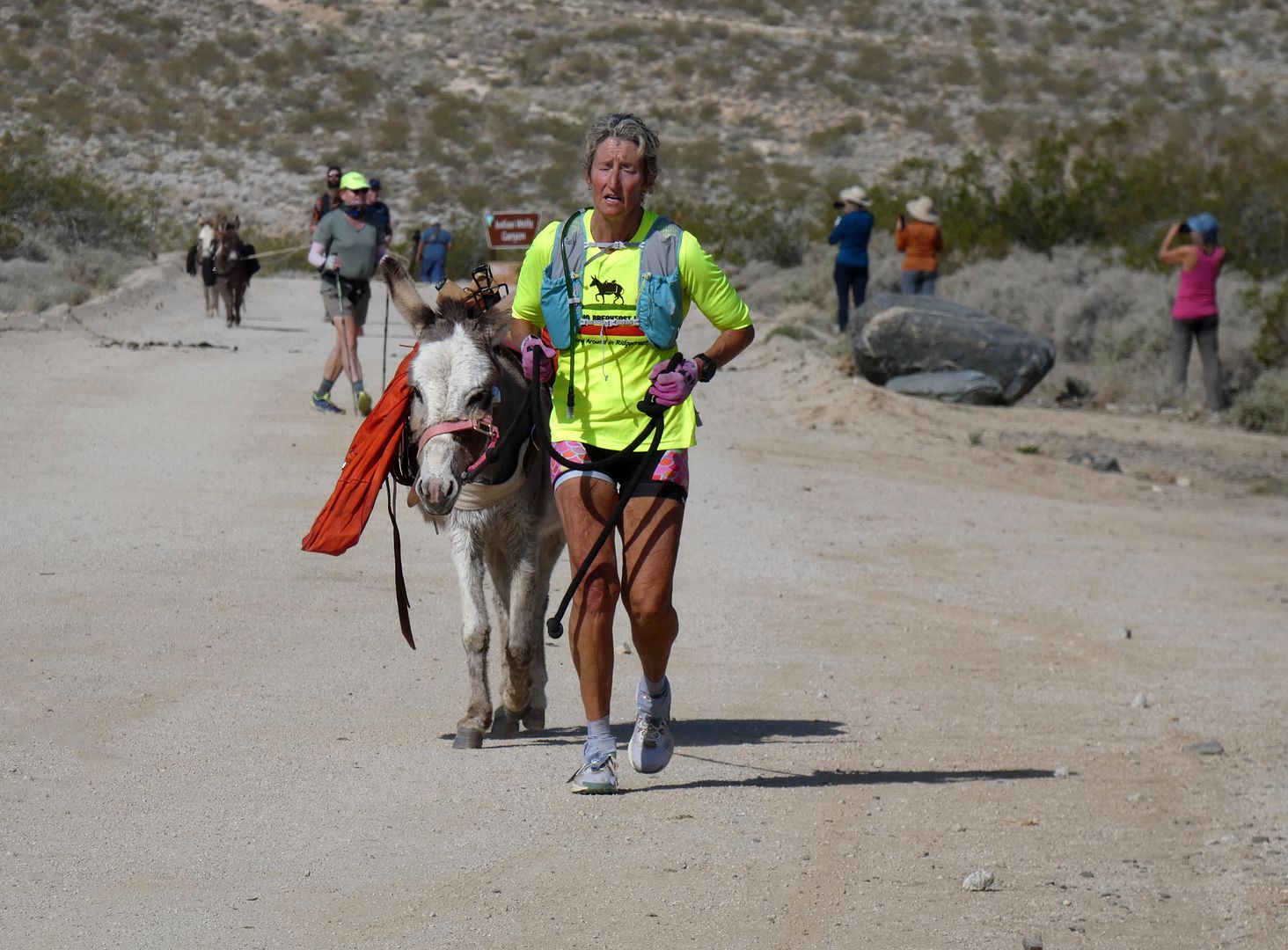
Many of the participants were clearly seasoned runners—but the dry terrain, the rising heat, and the addition of a beast of burden makes this a pretty difficult race.
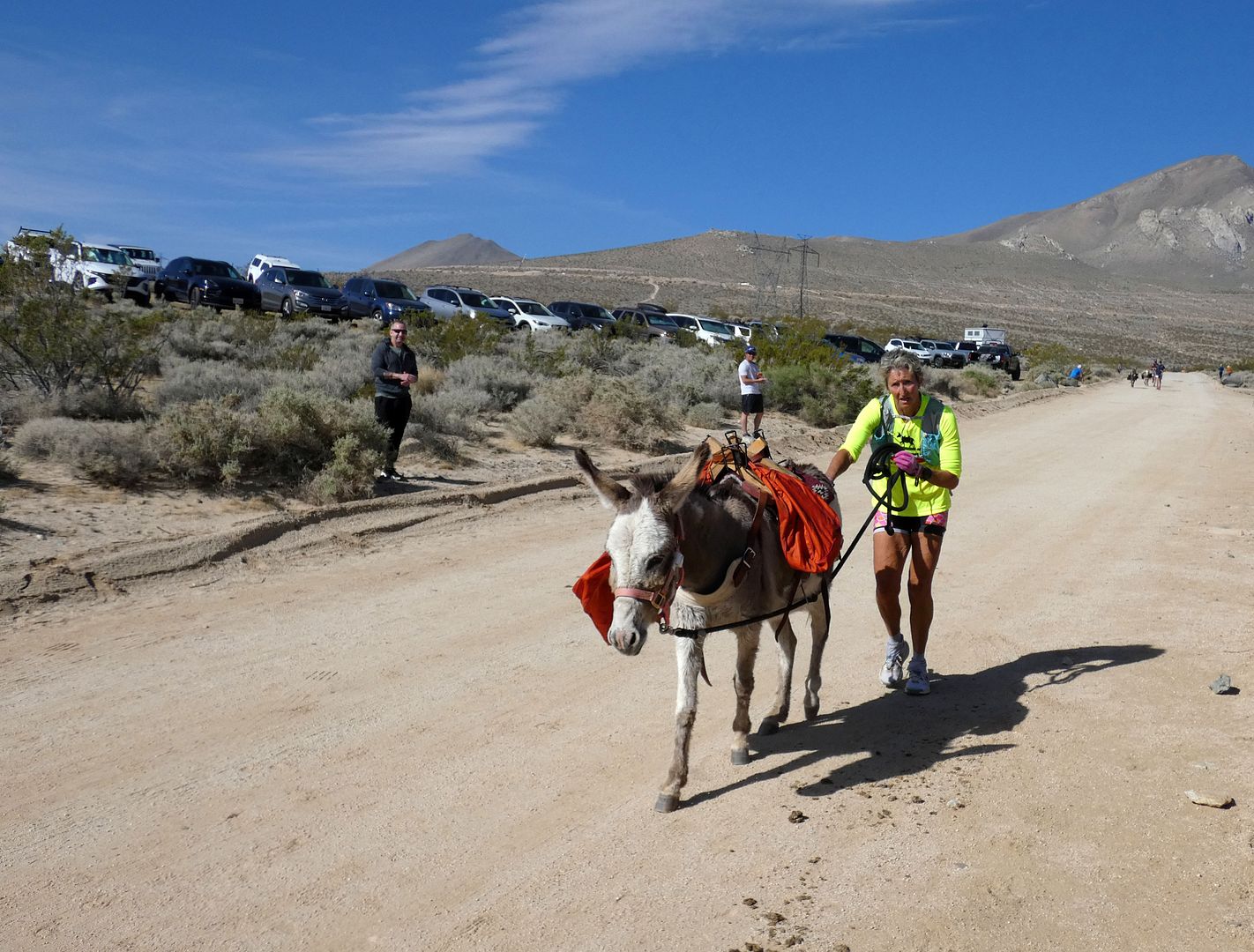
Witnessing the struggle to get to the finish line was pretty dramatic.
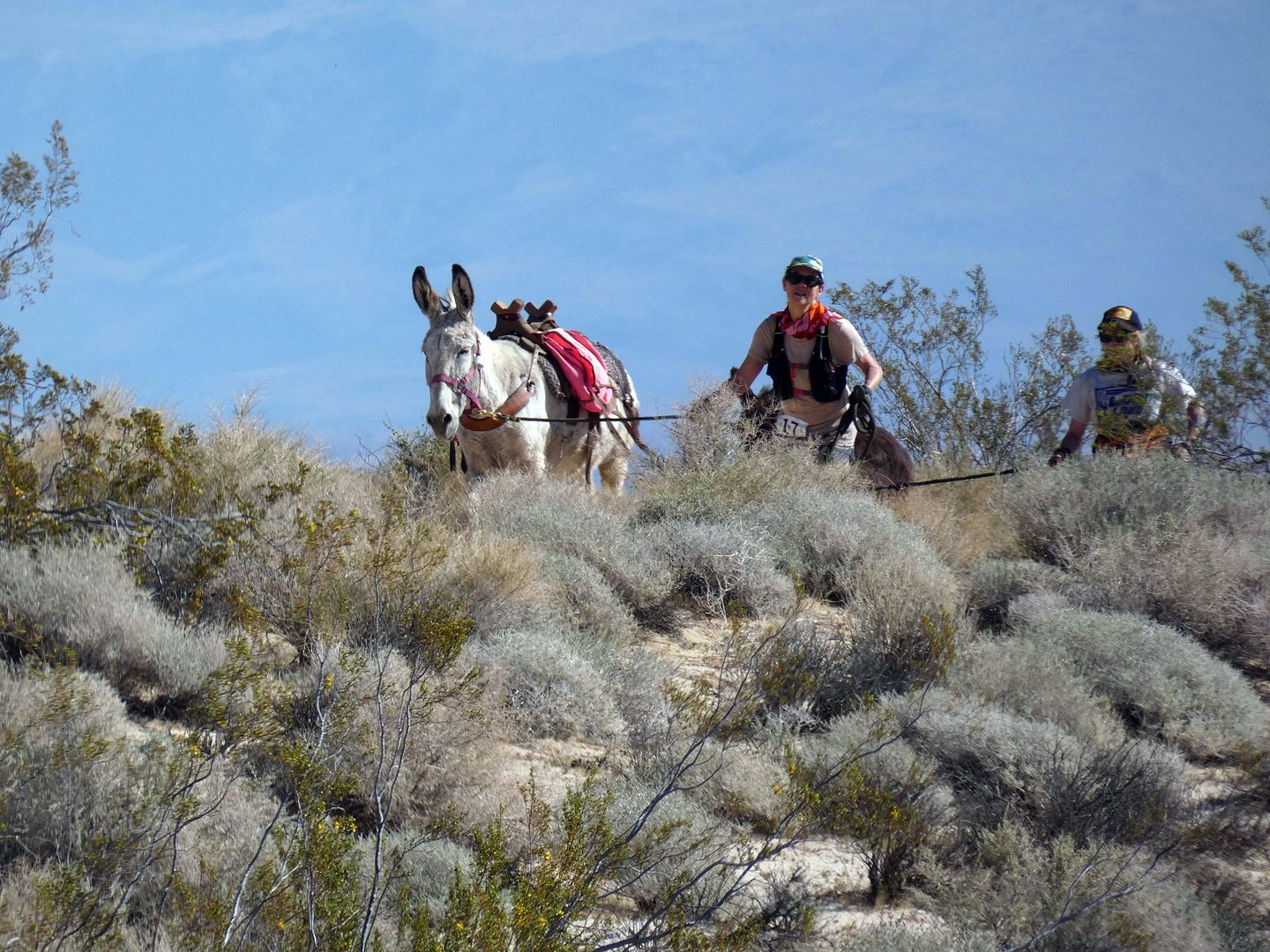
But then one by one, more burros would poke their heads out of the sagebrush and creosote...

...and stand proud at yet another job having been completed.
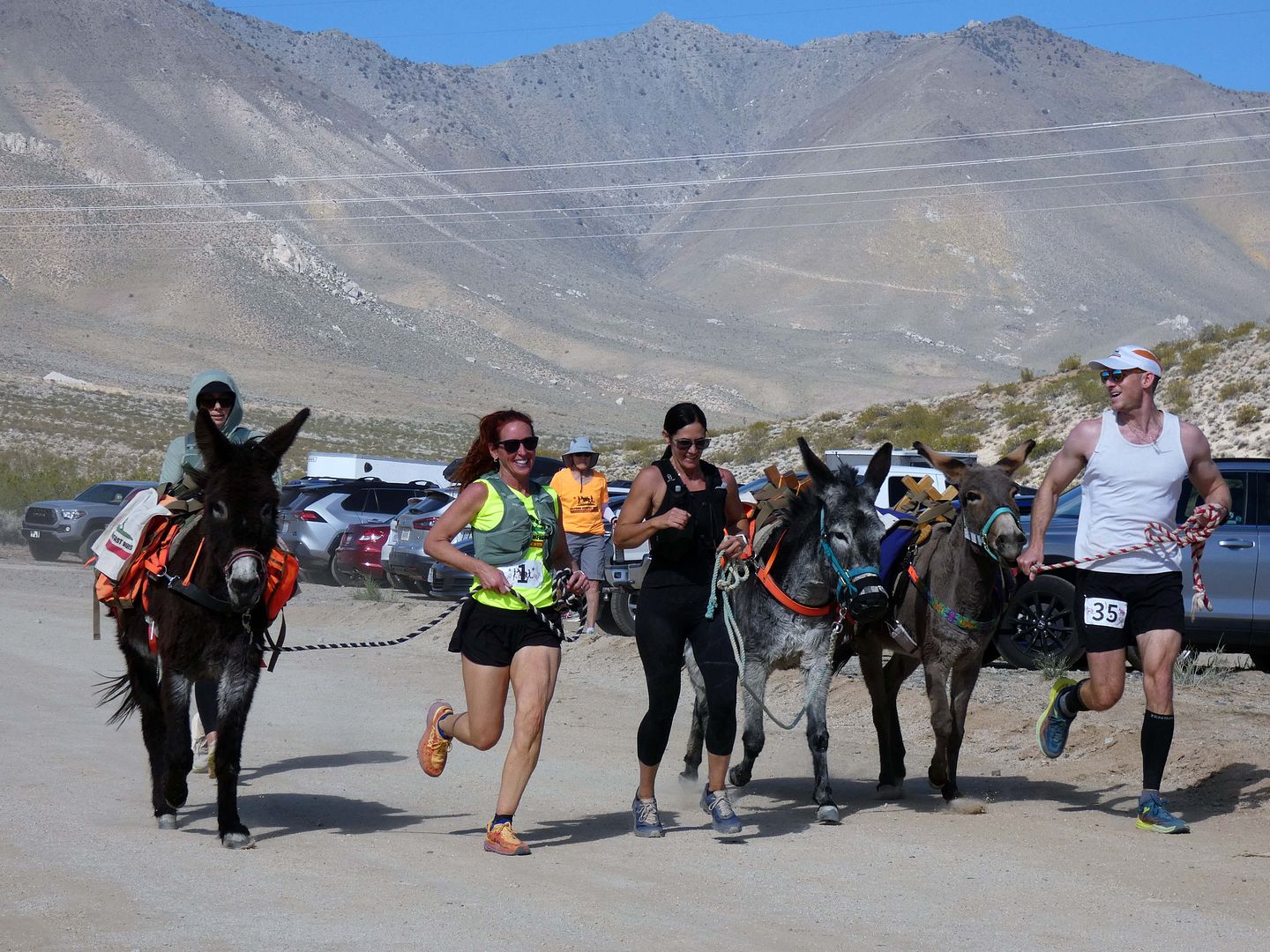
Donkeys are herd animals—so even if they didn't start the course off with a buddy (which some did), they'd often stick close to the other animals towards the end.

I swear they were smiling the whole way.
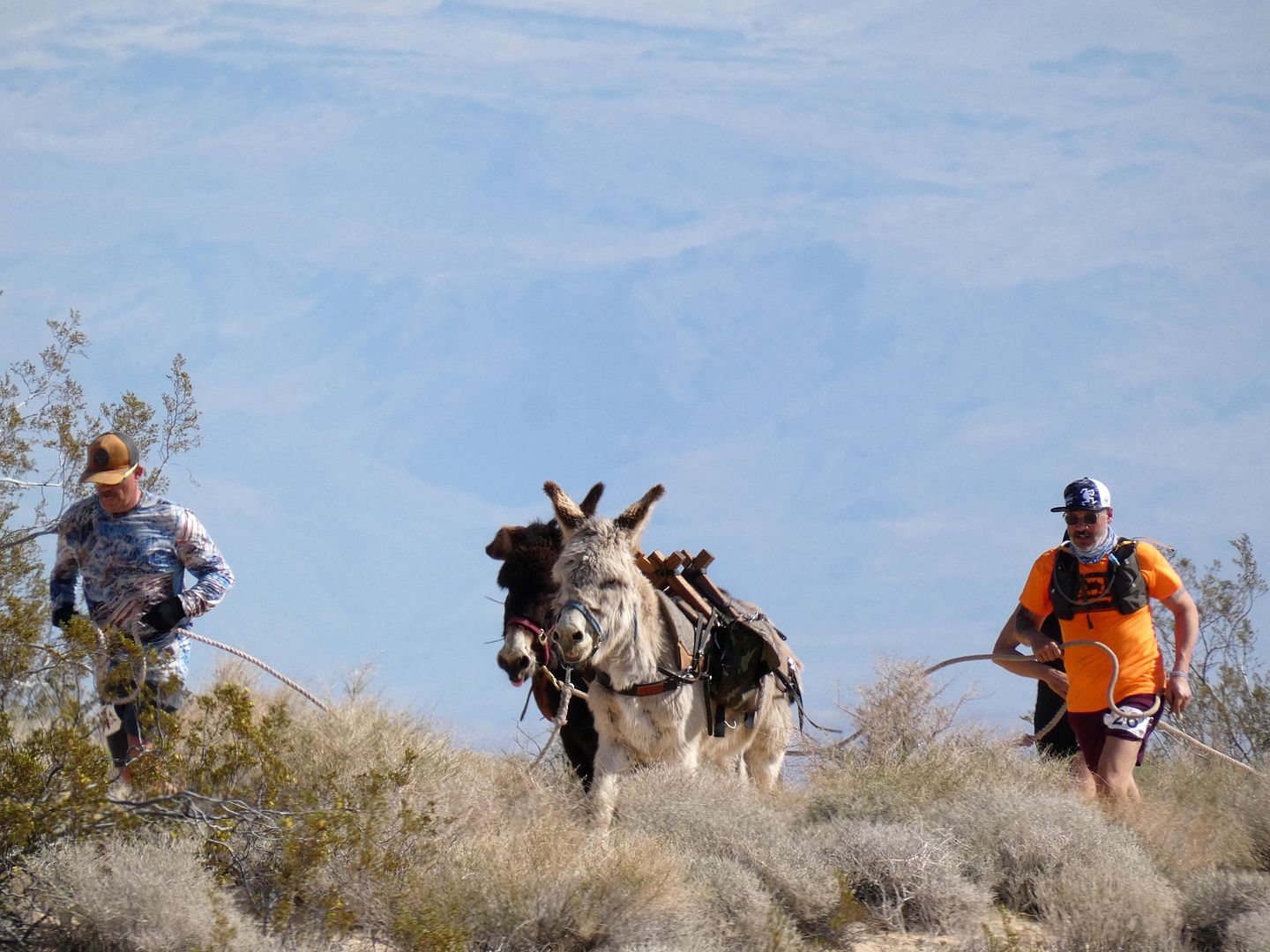
There were nearly 200 participants total—and I marveled at the wide variety of types of burros present, from the little guys to the huge mammoth donkeys, and all the fluffy, teddy bear-faced ones in the between.

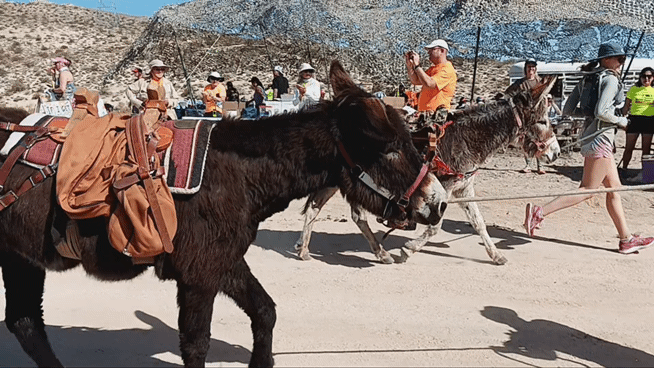
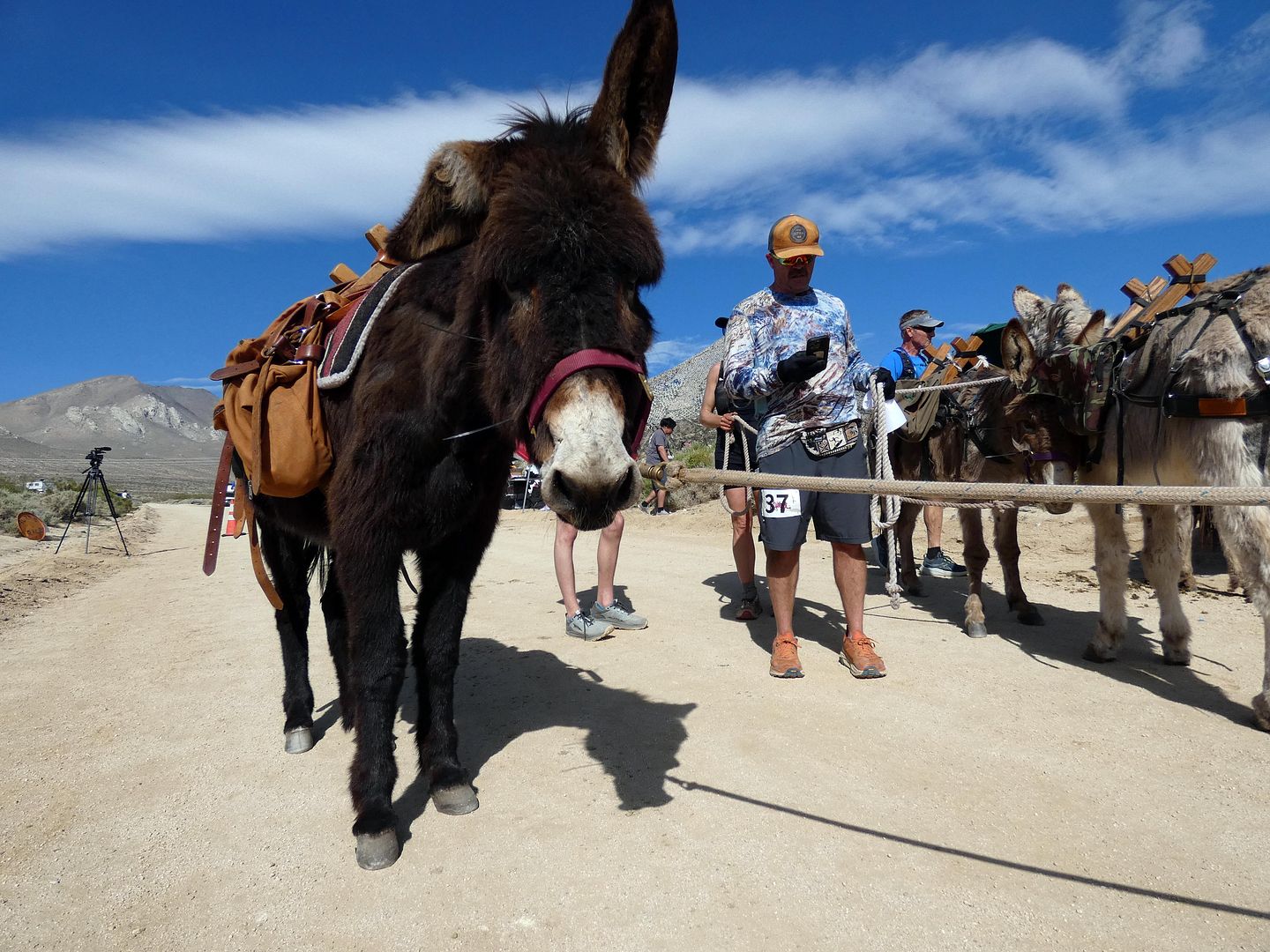
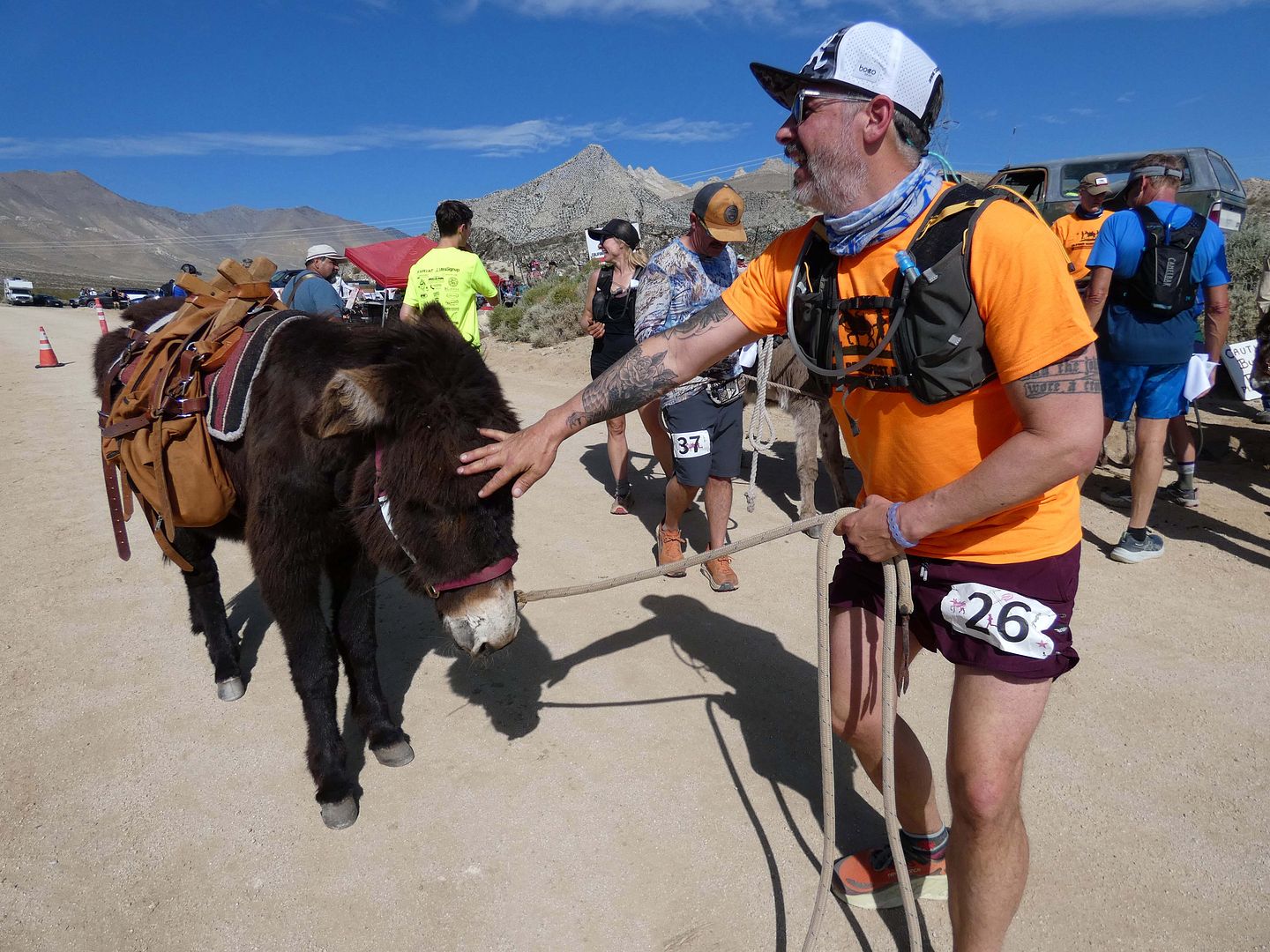
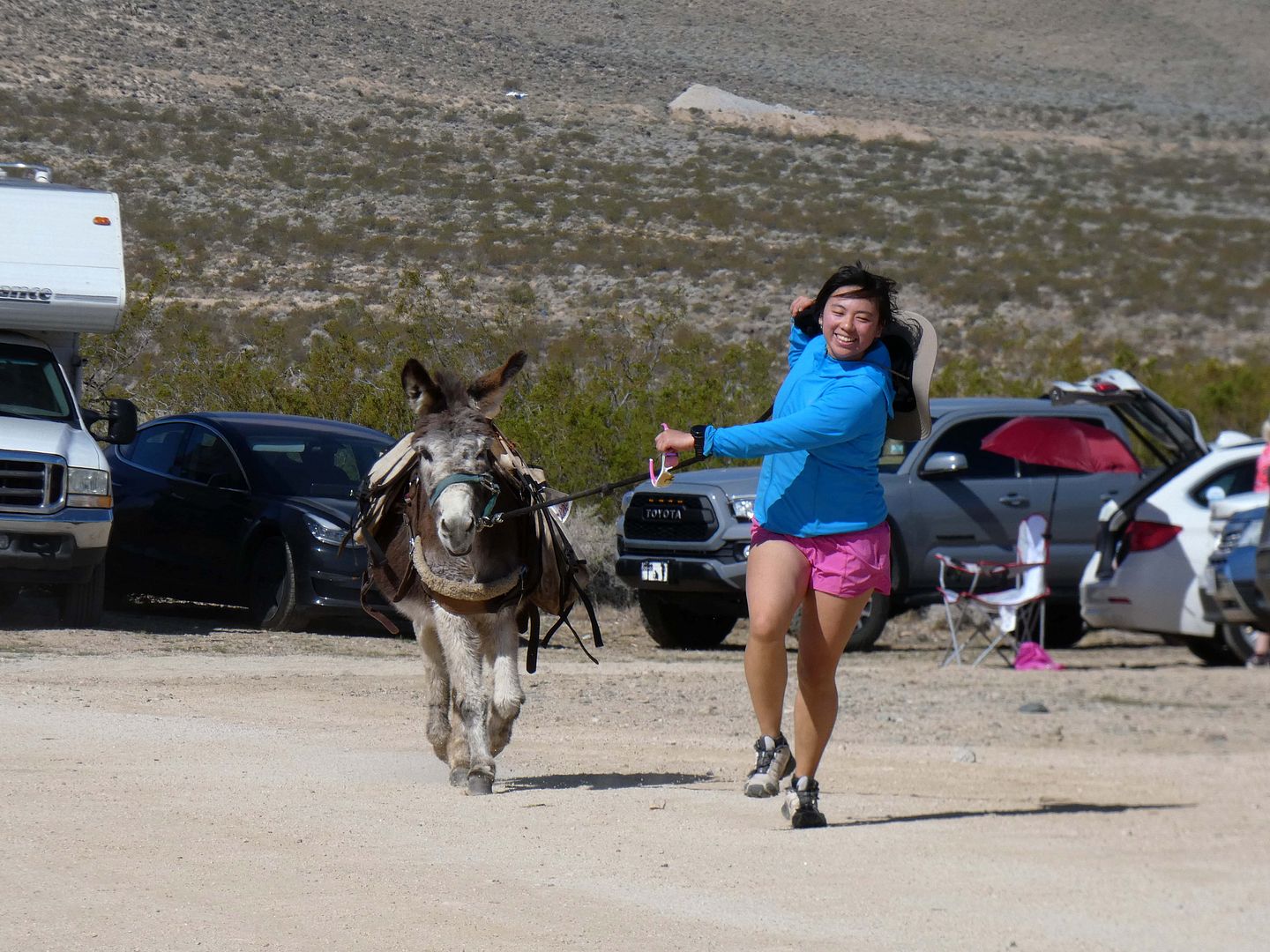
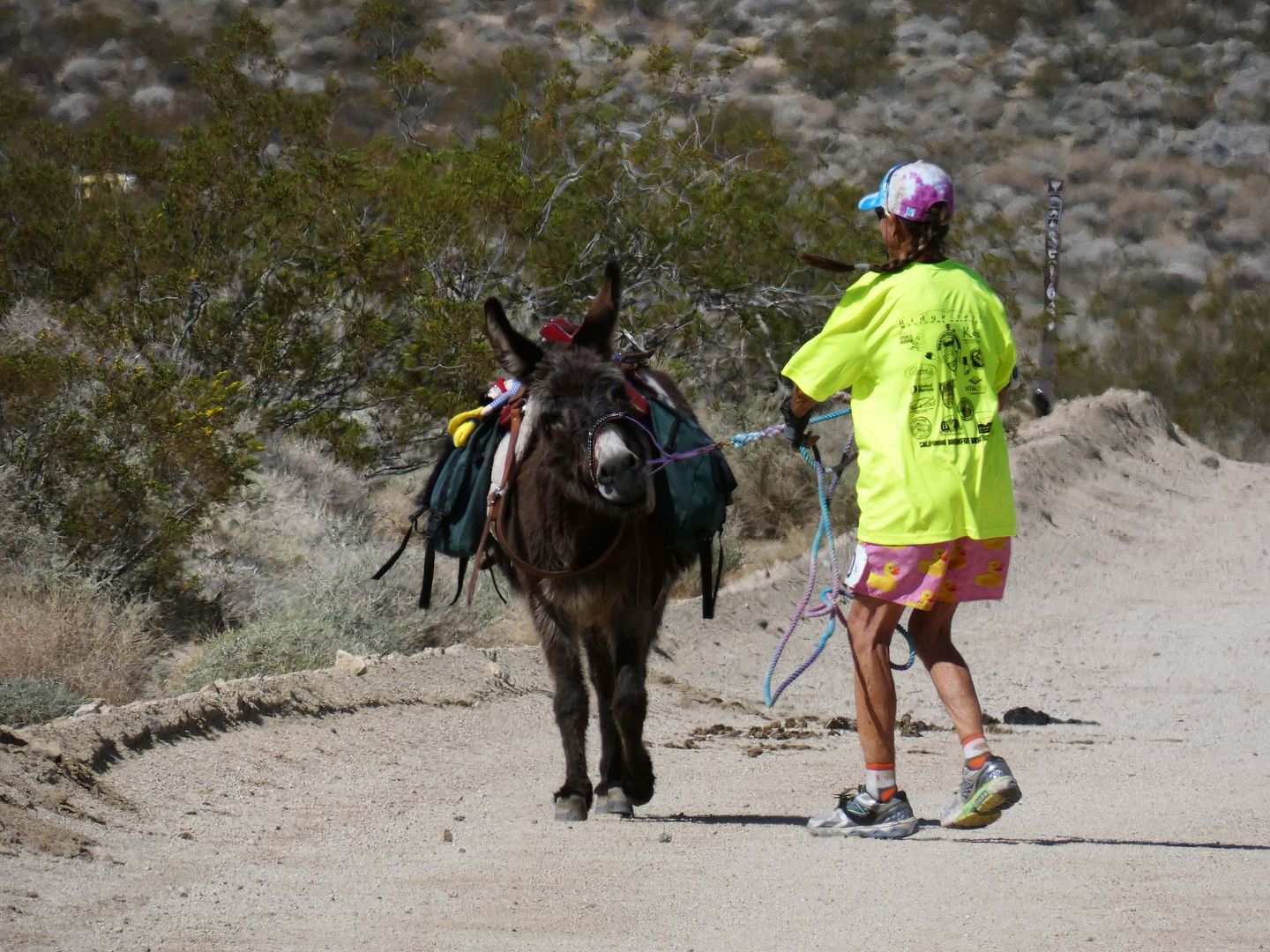
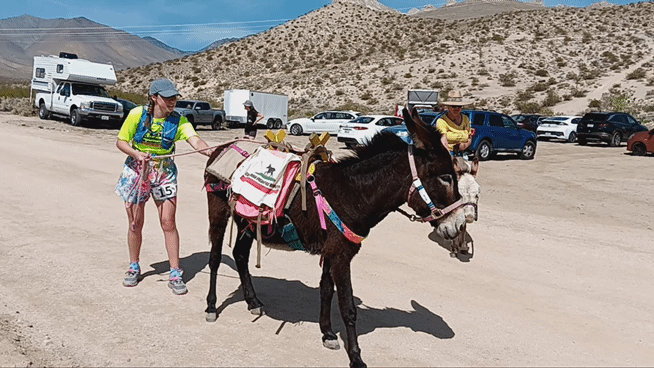
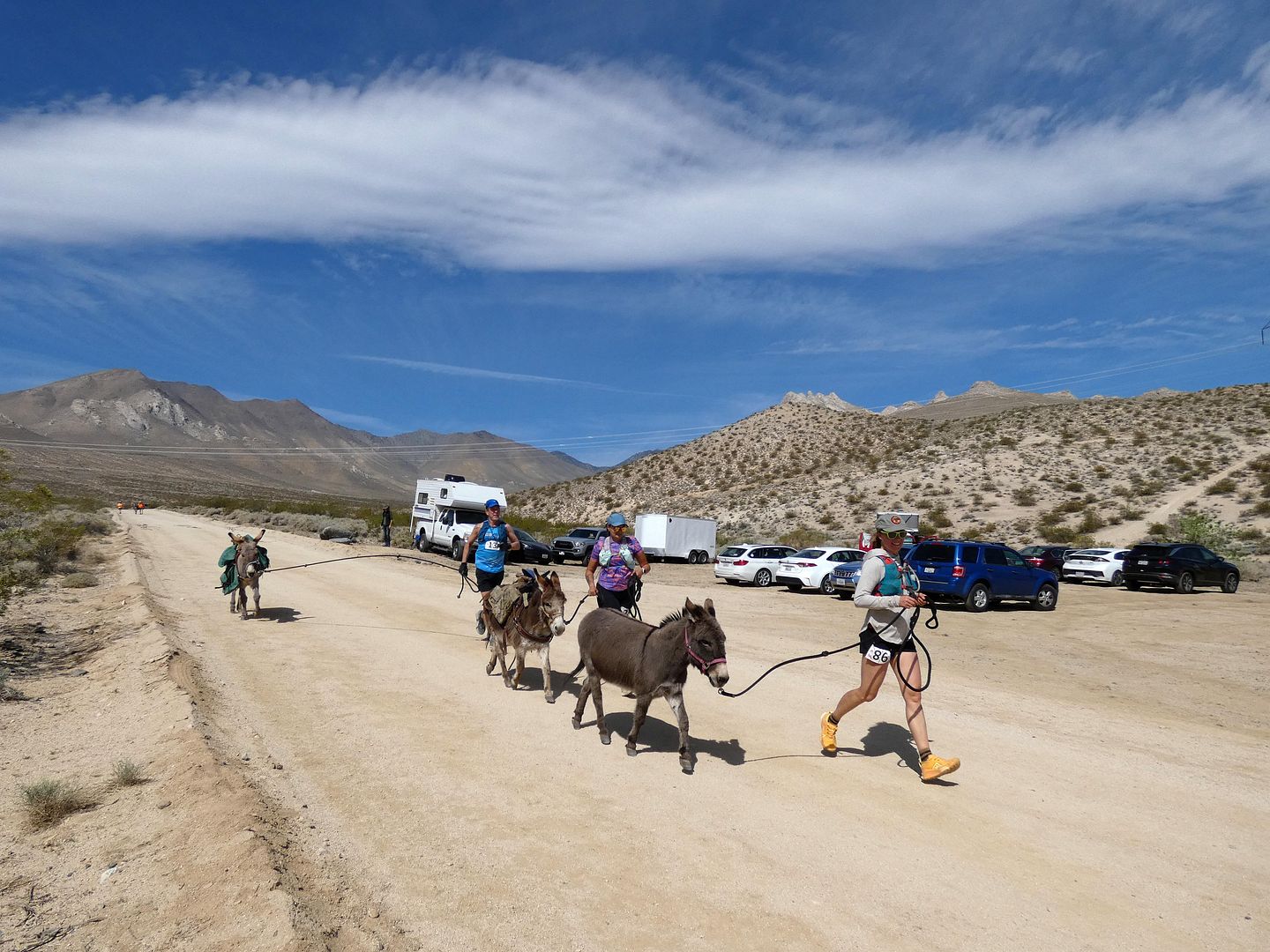
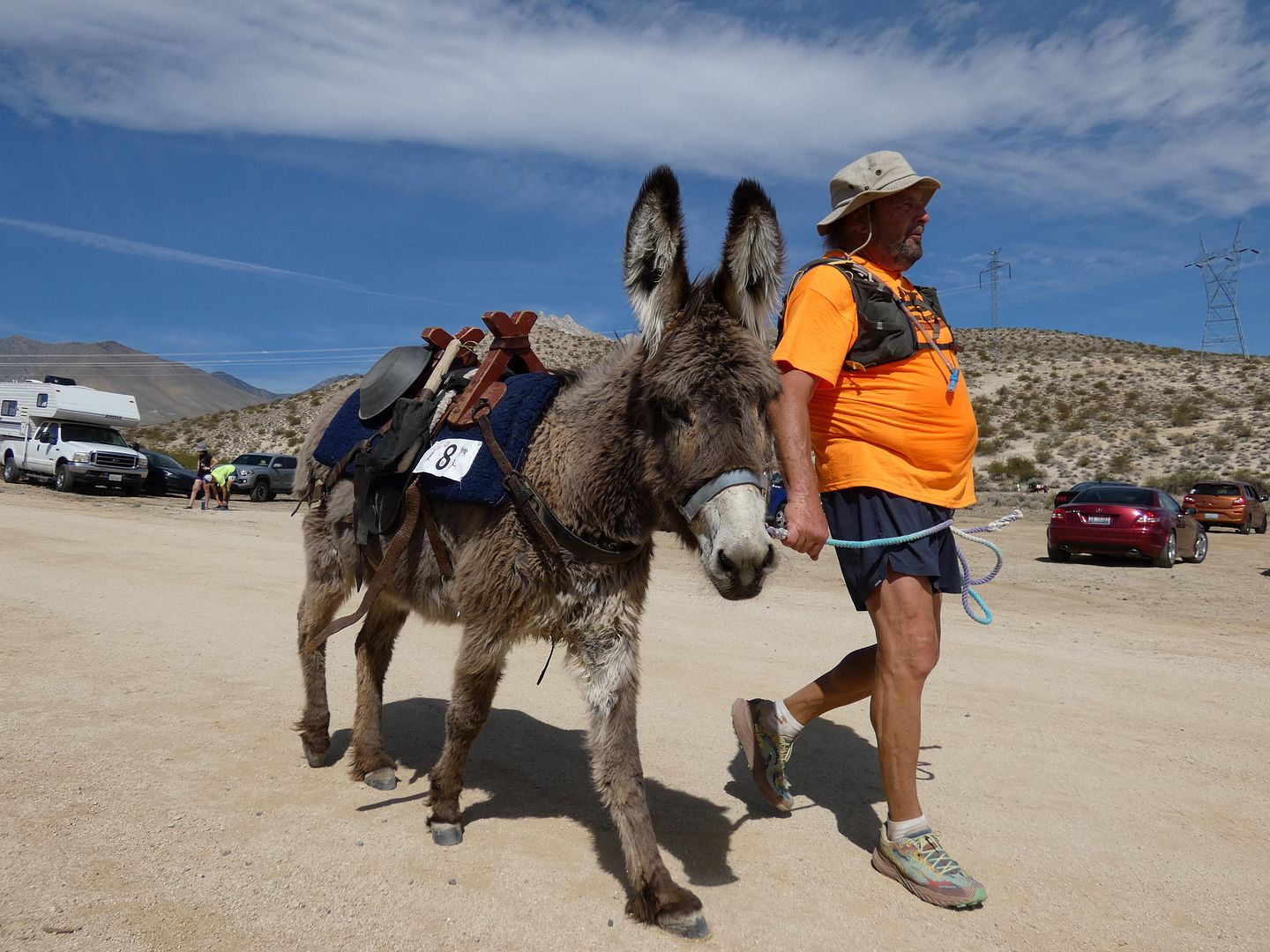


If they weren't keeping the pace, the announcer would say, "We've got some slow asses making their way..." But fortunately, things would often speed up a bit with the finish line in view, especially as spectators like me would cheer them on.

Even still, a burro might need to be yanked across those last few inches...

...like Luna, the gorgeous ass-lete with the one floppy ear.

Good donkey.

Ideally, the runners would have a month, or maybe a few months, even a year, to train with their burro and develop a relationship. But "blind dates" do happen. This pair (above) had just met and immediately started running together—which seemed to go just fine.

Other finishes were a bit more of a struggle. "Get behind it!" the announcer kept shouting.

It finally took a few other people to push the donkey in the ass to get it going.

In any case, it was a beautiful day to be outside—and a great excuse for me to take a little overnight trip.

I was turning pink in the sun and my feet were hurting in my hiking books (despite not having actually hiked in them), so I kept trying to leave—but then I kept seeing more donkeys on their way. "Burro on the ridge!" someone would shout.

And then I was glad to have stuck around long enough to see Siggy the micro-mini donkey—smaller than a baby burro—plod on down the path with its borrowed handlers. I didn't see Siggy set off—must've been sometime after the 10-mile starter pistol and sometime before the 5-mile—so I was glad to see how he wound up, and to wave goodbye to him.
There are still wild, feral burros in Death Valley and the Eastern and Southern Sierra. They've even been known to wander onto the Navy base. When their population grows too big for the size of the area, the BLM rounds some of them up and tries to adopt them out.
But even wild ones can be incredibly friendly.
Still, burro racing isn't for everybody. When one runner was asked how it went, she breathlessly said, "Actually, it stunk." I think probably if you're super-into running or marathoning, having a burro come with you could feel like a burden and make the run more of a beast.
I myself don't run at all—so if anything, it would have to be burro hiking for me (something I actually got to do with Adam's Pack Station about 10 years ago). But for this event, spectating was the perfect way for me to enjoy the donkeys and the spirit of days gone by.
Related Posts:

Such a wonderful report, we are very flattered about this and grateful for your time and generosity. You captured the race so well, I am glad you skipped hiking the five miles! We hope you come back next year, maybe you want to experience it IN the course with a donkey. First female (runner), even though it is about the burro, their gender doesn't make much difference in speed and performance like it does for humans. SEE YOU HOPEFULLY NEXT APRIL!!! Or sooner if you come to our magic desert bubble. Find us! (California Breakfast Burritos)
ReplyDelete